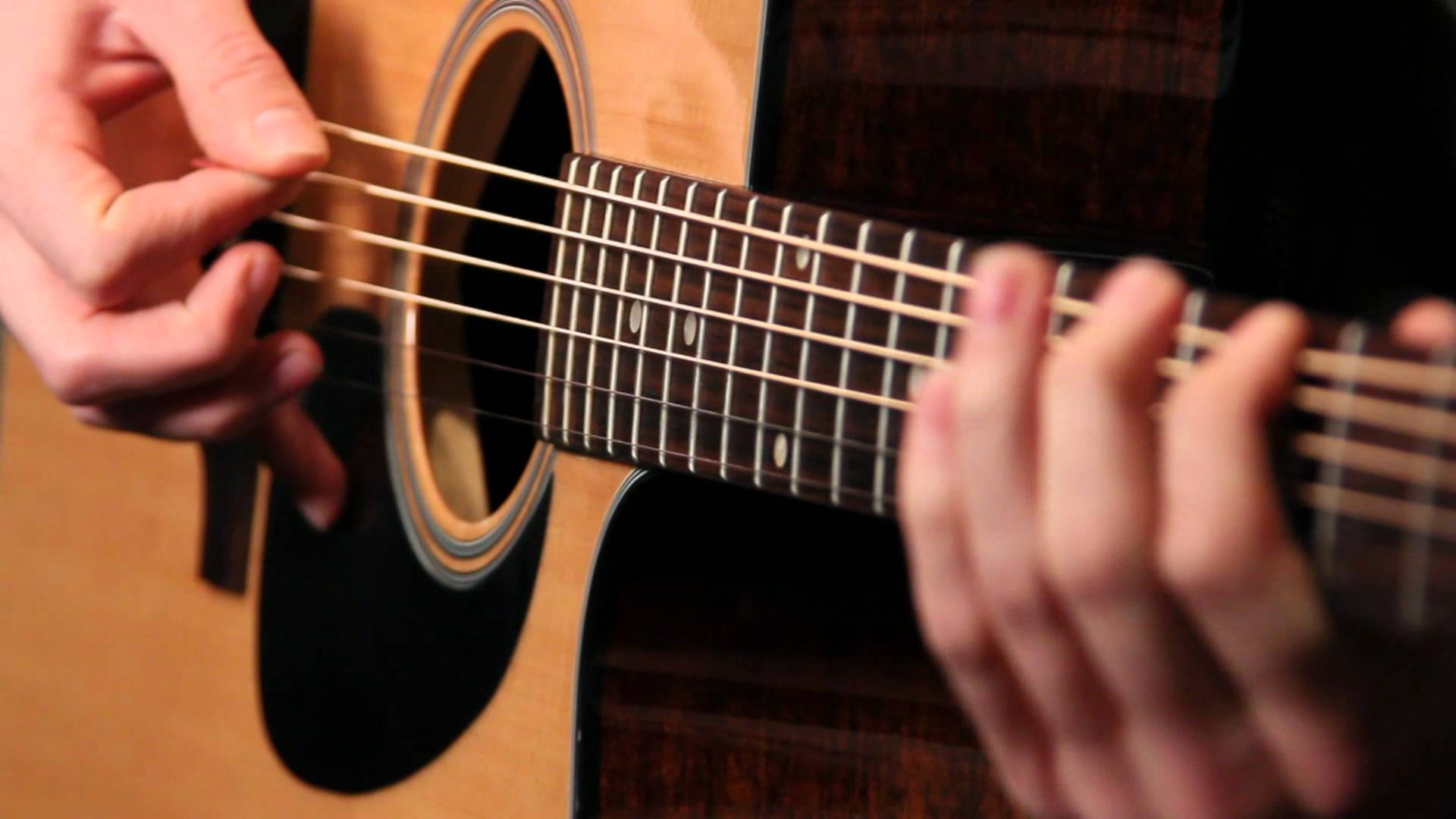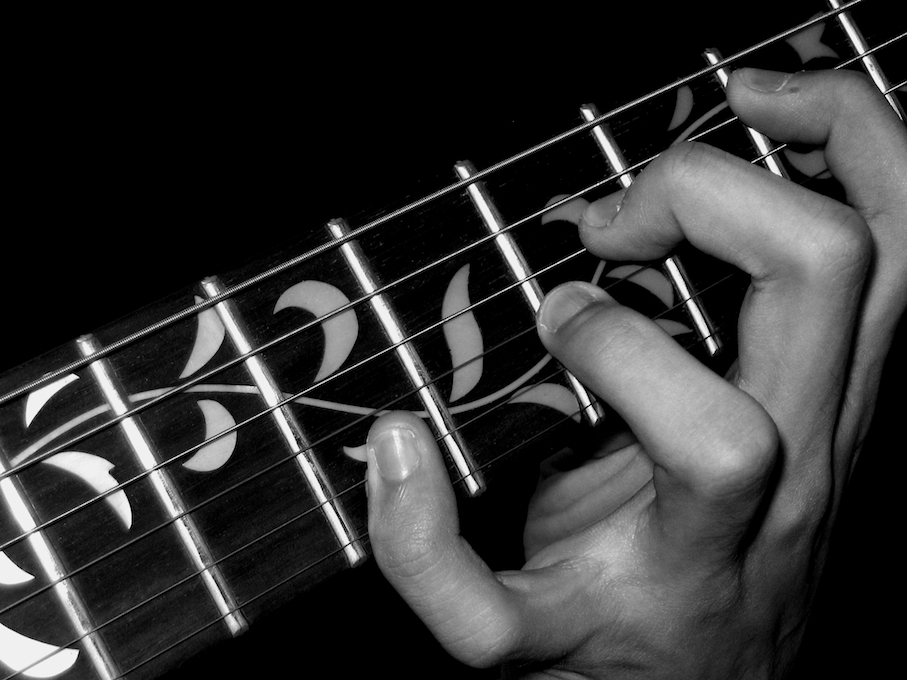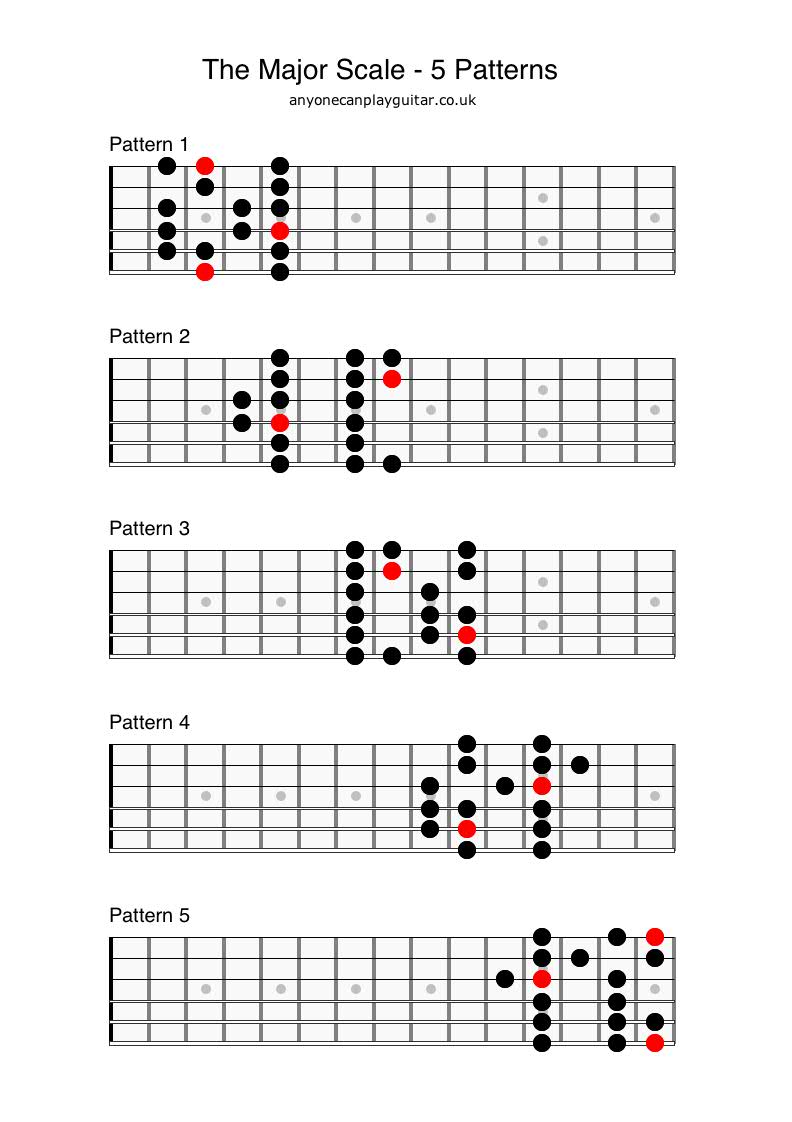Learn Scales on Guitar | How to Learn the Major Scales Easy with the Guitar

Learning guitar scales can be a really frustrating thing if not approached the right way, but the potential of knowing them is limitless! So many things you can play with it!
I remember when I was first starting to play guitar, I felt terrible because I did not know the major scale, I wanted to create new melodies or improvise right away.
So, let's see how Major scales work and how we can play them on the guitar guys!
Sometimes you’ll want to give up the guitar. You’ll hate the guitar. But if you stick with it, you’re gonna be rewarded. –Jimi Hendrix
Check out our No.1 recommendation for learning guitar here.
1) The Notion of Distance Between Sounds.

Just like we measure anything else (distance, temperature, speed) the distance between any two sounds can be defined precisely. So, the very first thing we must know is the metric unit that we use for sounds. This is The Whole step and the Half Step. (You may also find them as Tones and Semi-Tones)
The metric unit in music is the Whole Step and the Half Step, we can determine any distance in any two sounds by the number of steps between them. for example, we say that between this note and that other note, there are 4 half steps.
-
Half Step = Minimum distance between any 2 sounds
(from any fretted note in the guitar to the very next one, the closest fret in the same string)
-
1 Whole Step = 2 Half steps
You may already know that sounds are technically frequencies, right? But in music, we call these frequencies by name.
-
Music only has 12 different sounds; (A –A#-B-C-C#-D-D#-E-F-F#-G-G#-), so consequently, if you play an A in your guitar, as you move up one fret at a time you will pass through the 12 notes until you reach A again.
Understanding the distance between sounds is important because those distance relationships from your starting note to the other notes are what give any scale its identity.
2) Whole Steps and Half Steps on the Guitar.
Pick up your guitar and look at the different frets, now you know that each of those frets represents a half step.
So,
-
You are moving in half steps up if you play to the right.
-
You are moving in half steps down if you go to the left.
Consequently,
If you move up in whole steps, you are skipping one fret in the middle each time. (1 whole step = 2 half steps)
Cool, now that we know how to move in the guitar by half steps and whole steps, let's dive into the identity of the Major Scale and how to play it!
To visually see what we just learned, you can click on the link below.
The Formula of The Major Scale
The major scale it's one of the most used scales in music, therefore is one that you want to learn well and be able to play in the guitar. (from any starting note)
Here I will provide you with a magic formula that you can apply starting in any note in the guitar, and if you are measuring correctly, voila!
This formula can be thought like the DNA of the Major Scale;
Formula: Whole – Whole – Half – Whole – Whole – Whole – Half
Applying it;
Pick any note in your guitar, and from that starting note move upwards (to the right of the neck) following exactly the order provided in the formula.
Let's say you started in note C; then you are playing the C major scale. - the note that you start with, will always give the name to the scale.
Because of this, is important that eventually you learn how to find all the notes on your guitar.
3) The 7 Steps.

Determined by the formula, we see that the Major scale has 7 different notes, we call them steps.
Grab your guitar and play a C, now try to go through all 7 different steps;
-
C - (whole step up) - you get to D
-
D – (whole step up) - you get to E
-
E - (half step up) - you get to F
-
F - (whole step up) - you get to G
-
G- (whole step up) - you get to A
-
A- (whole step up) - you get to B
-
B- (Half step up) - you get to C (starting point again)
So, the 7 steps in the C major scale are; C – D – E – F – G – A – B
Try starting from a different note now, and see if you can play it correctly. Remember the formula!
4)The Concept of Transposition and Note Relationships.
The good thing about what you just learned is the idea that can be applied to any note in the guitar,
In music and specifically in the guitar, we call this “transposition”.
If you start the formula in a different note, you will have the major scale of that particular note.
But the formula will never change! Great isn’t it? This means the formula is transposable.
So, how many possible Major scales are there? only 12. One for each different sound there is.
Sometimes we may call them differently, (D flat instead of C sharp for instance), but that is a topic we will not address now and you don’t really need to know at this point.
What gives the major scale its characteristic sound? nothing but the relationships formed by the distance between the sounds.
5) Knowing Where to Find the Notes on Your Guitar and playing the Scale.

I know that memorizing the notes in your guitar fretboard is not fun, but has a great benefit!
Try starting with just a few notes to use as a reference, go little by little.
A good starting point is to memorize the notes in the fretboard marks of your guitar. (where the dots are) what if you could memorize the notes on each string on frets number 3;5;7;9 and 12? Or maybe start with just one string!?
The major scale is typically played in different positions or shapes; In reality, you will never play a major scale in just one string, so your next step is to be able to play all the 7 steps of the major scale playing not more than 3 notes per each string.
Let's try it together; we will play the G major scale on the guitar.
-
Play the 3rd fret of the low E string. (that is a G note)
-
On that same string; play the next two steps (so steps 1;2 and 3 are in the E string)
-
Now find the 4th step on the next string down (the A string) - that note should be a C
-
On that A string; play steps 4;5 and 6.
-
Now on the fourth string (D) play the last step; should be an F# note.
Congratulations! You just played a G Major Scale!
Let’s say you start on the 7th fret now of the low E string (that is a B note)
Apply the same process described above and you will be playing the B Major Scale.
Positions or shapes;
:max_bytes(150000):strip_icc()/major_5th_posn-56a461663df78cf772821a4d.gif)
Depending on the needs and how guitar players prefer or like to play the succession of the seven notes of the major scale, the different positions of the major scale are formed.
In this stage this is something that you don’t need to worry about, just know that there are different positions or shapes and those are determined by the fingers that you start playing the major scale or the strings you are choosing to play those same notes. Just options and combinations of the same formula! (WWHWWWH).
Here below you can find a YouTube video that describes the five shapes of the major scale in the guitar.
But just remember that you have no obligation of playing it in any particular shape, all you really need is to follow the formula.
6) Technique

As you practice the scale, try to play every note as clean as possible, making sure each sound is clear and pure (one note at a time). Play it in an upward motion and downward motion as well.
Left hand;
-
Make sure you apply the right amount of force with your fingers towards the neck to maintain the note resonating.
-
Play the all notes with your fingertips.
-
Avoid playing the different steps with the same finger, use the four fingers of your left hand assigned to the fretboard.
Right Hand:
-
If you are using a pick, start with the pick playing downwards and keep picking down and up each time for each different note of the scale.
-
Don't move the pick in just one direction.
-
Keep your picking constant in rhythm and at the same speed. (the slower the better)
-
Focus on playing with no mistakes instead of achieving speed.
7) Summary
Let’s have a look at the most important things we need to remember to play the major scale in the guitar!

-
The Major scale can be started in any note, and that note gives the name to the scale.
-
The major scale is a succession of seven notes (or 7 steps)
-
The seven notes are determined by the formula;
Whole – Whole – Half – Whole – Whole – Whole – Half
-
You should try to play these notes using all your fingers of the left hand.
-
Do not play more than 3 notes on each string.
I recommend that you select the easiest and common keys to play as a start. These keys are C Major, G Major, F Major, and D Major.
Alright guys! I hope you have fun applying these concepts and that you can master the Major scale in no time!
Check out our #1 recommendation for learning guitar below!
About the Author:

Leo is the founder of https://sixstringtips.com, a music website providing and sharing trust and useful information to help people easier to choose musical instruments and learn to play guitar.
Author bio:

Dr. Robin Alexander
Dr. Robin Alexander, an MD Pathologist and passionate guitarist, combines his love for music and science. As a guitar enthusiast, he shares valuable insights and tips on guitar playing here at Guitarmetrics, helping musicians enhance their skills and enjoy their musical journey.







